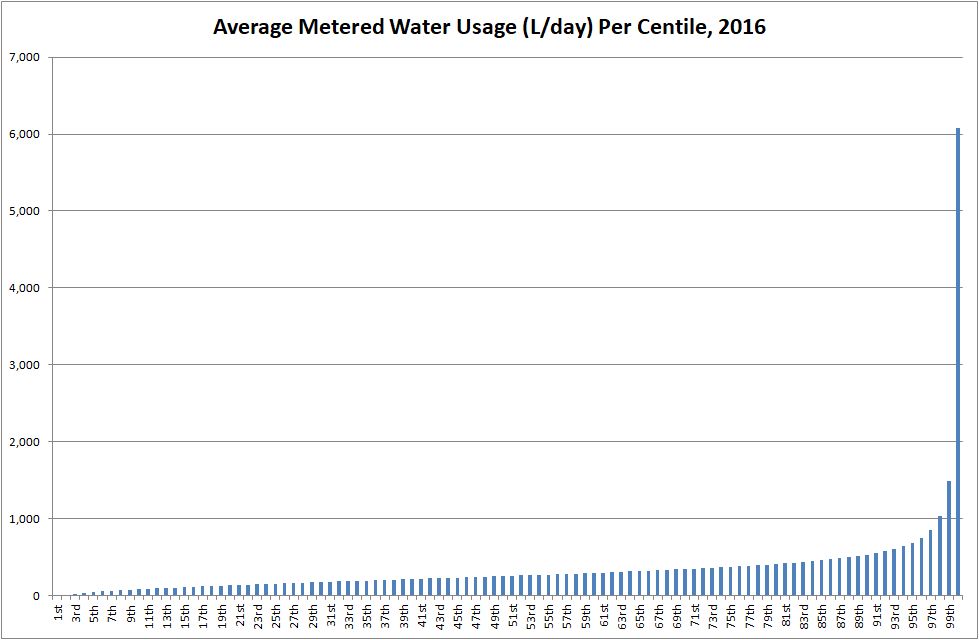Podcast: Play in new window
Subscribe: Apple Podcasts | RSS | More
David Robert Grimes is a physicist, cancer researcher and frequent writer and commentator on scientific topics. 
*****
I was talking in the last couple of podcasts about water charges, and the resistance to them, particularly in the light of the summer droughts, and there was quite a bit of feedback about those pieces.
One of the main points that I was making was that water metering would discipline both the consumer and the supplier not to waste water. In podcast 75, I said this:
And I probably should have known better than to rely on Irish Times figures without checking them out. One listener who did check them out was Brian Greene, and he pointed out that my comparison with the UK was wrong, because the figures from the Irish Times were per household, not per person, thanks to him for that.
But my point that there was quite a big variation in water usage, and that these differences largely track wealth, is still valid, even if the figures are collected at the household level, rather than the individual level.
I think that Brian was on the same page as Brendan Ogle of Right 2 Water, who I talked to in podcast number 78. Brendan’s take was that there just isn’t much slack in the system, there isn’t much conservation that consumers can do to moderate water use.
So all this inspired me to go to the source, pardon the pun, and have a look at the raw water consumption figures and see if they told a tale; could we work out whether there is a justification for water metering. So I went to the CSO, and special thanks to Linh Nolan of the CSO who dug out the information for me and… oh, boy.
What I got was the data from water meters, for 2015 and 2016 – 2017 isn’t ready yet. It’s divided into centiles, that’s to say grouped by each percent, the 1 per cent who are the lowest users, the next lowest percent and so on to the hundredth centile, the highest users, so it’s quite fine grained.
One figure that screams out is that, get this, in 2015, the hundredth centile accounted for more than a 25 per cent of all the domestic water use. Get that – a quarter of all the domestic water supply, used by less than one per cent of households.
The figures show that there is gigantic variation between the amounts of water used by different households. Now, we have to be careful with the figures, because for sure the bottom few centiles are almost certainly dwellings that are vacant for some or all of the year in question – the bottom centile averages only one litre of water per day, so there’s obviously nobody living there, and if there was, they’re dead of dehydration.
Also according to the CSO , about 13 per cent of Irish dwellings are vacant, so if we disregard those and look in 2016 at the twentieth centile, those households are using 123 litres per day, and the fiftieth centile, the median, is only double that.
But the 99th centile, those households are using 1,500 litres per day, 10 times more than the twentieth centile, and the hundredth centile, the top one per cent of users are using more than 40 times more water than the twentieth centile, more than six thousand litres of water per day, every day of the year.
Bear in mind that these are domestic water users, not hotels, not swimming pools, although I don’t see how you could possibly use that much water unless you were regularly refilling a swimming pool. That amount of use couldn’t even be explained by massive water leaks, your house would fall down if that much water was leaking into your foundations every day.
To put that figure in context, a good-sized domestic swimming pool, the type that you get in a bog-standard house according to some campaigners, would take sixty thousand litres of water to fill. These people could refill that pool every ten days and still have plenty of water left over to make a cup of tea when they were finished their daily swim.
One lesson from this is that there is a massive variation in the levels of domestic water use.
But there’s another lesson. I mentioned that in 2015, that top centile, the top one percent used more than 25 per cent of all the domestic water supply. That figure that I’m referring to, the six thousand litres a day in 2016 for the top one per cent is only 17 per cent of the domestic water use.
Get that. The top one per cent of users, between 2015 and 2016 went from accounting for 25 per cent of all domestic water use down to 17 per cent. What happened? I don’t know for sure, but I do know that water charging kicked in in 2015. And then those people saw their bills. And then the next year, they drastically reduced their consumption.
Sure, the top one per cent are still using enough water to drown a herd of elephants, but the reduction in their usage from 2015 to 2016, accounted for eight per cent of all the water used by every household in the country.
I take the point made by Brendan Ogle, that it might have been better to spend the metering money on other things, but the fact is that there are 700,000 domestic water meters installed in the country, and that alone shows that they have the capacity to make a very big dent in excessive water usage.







